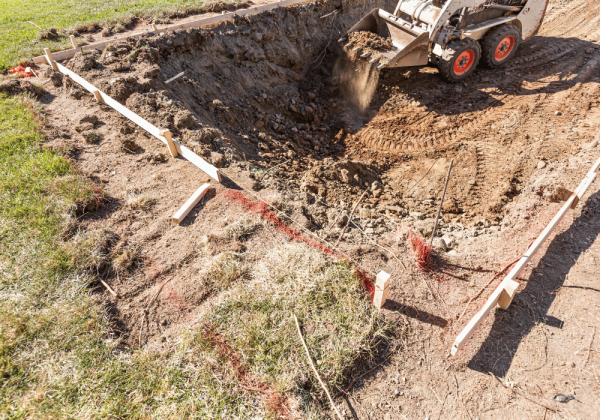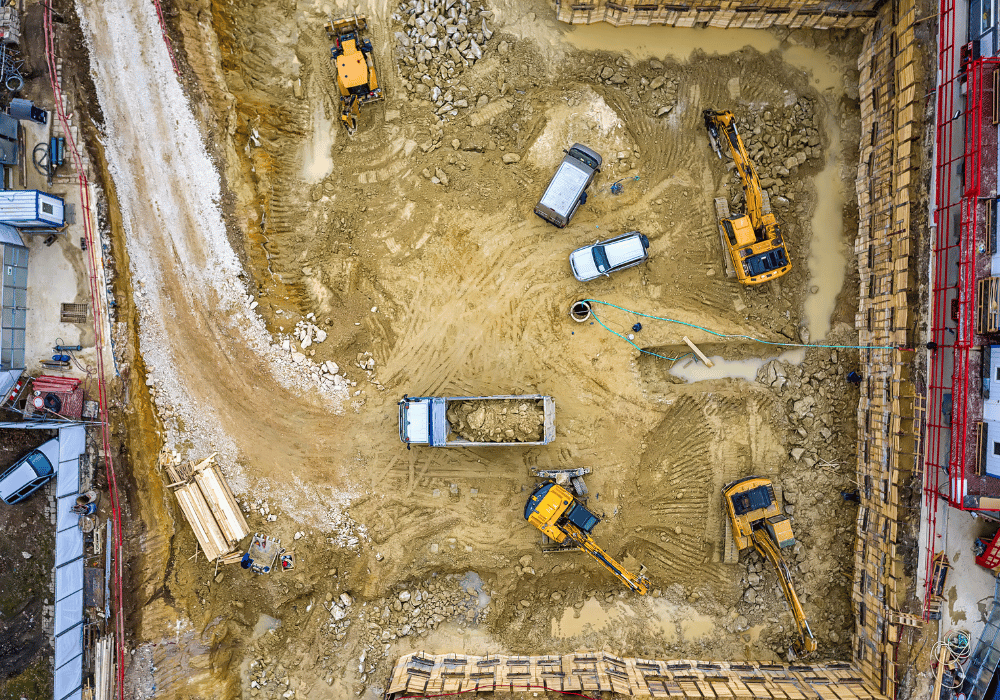When embarking on any construction project, whether it’s a small residential build or a massive commercial project, success starts long before the first brick is laid. It begins with proper site preparation. Skipping or cutting corners during this phase of construction can lead to costly mistakes, structural issues, and delays further down the line. This blog will explore what site preparation entails, outline the key steps involved, and highlight the benefits and challenges of getting it right. Whether you’re a construction professional or project manager, understanding this critical foundation is essential to delivering a successful project.
 What is Site Preparation?
What is Site Preparation?
Site preparation is the initial phase of any construction project. It involves making a plot of land ready for building or development, ensuring that the ground is stable, safe, and suitable for construction. Think of site preparation as setting the stage—without a sturdy and reliable base, any structure built on it is at risk of failure.
The stage typically includes activities like site surveying, clearing unnecessary vegetation or debris, soil testing, grading, and excavating. The overall goal? To create a level, safe, and construction-ready site that ensures the project can proceed smoothly.
Key Steps in Proper Site Preparation
Site preparation is a meticulous process made successful by following specific steps. Here’s an overview of the essential phases:
1. Surveying the Site
Before breaking ground, surveying is critical. A professional surveyor will assess the land to determine its boundaries, contours, and existing features. The survey also identifies any potential legal or logistical challenges, such as encroachments or zoning restrictions.
Example: For a high-rise building, surveyors will map out underground utilities to avoid future conflicts during construction, such as hitting a water main.
2. Clearing the Area
The next step involves clearing trees, shrubs, boulders, and any existing structures. This ensures the site is devoid of obstacles that could hinder construction or interfere with safety.
Pro Tip: Always check local environmental and permitting regulations when clearing land to ensure compliance.
3. Conducting Soil Testing
Understanding the soil’s composition and properties is vital. Soil testing provides information about load-bearing capacity, moisture levels, and potential contamination. It’s especially crucial for large-scale projects where unstable soil can lead to disastrous consequences.
Example: If a site’s soil shows poor drainage, engineers may need to reinforce it or install drainage systems before proceeding.
4. Grading and Excavation
Grading ensures the ground is level and slopes are properly directed for drainage. Excavation prepares the site for laying foundations by digging to the required depth. Without proper grading and excavation, water accumulation and uneven settling can occur.
Pro Tip: Using modern machinery, like automated graders, ensures maximum precision during this step.
5. Utility Mapping and Connections
Before construction starts, it’s essential to plan for crucial utility connections like electricity, water, and sewage. Mapping existing utilities or laying new lines paves the way for a seamless build process.
6. Erosion Control
For larger sites, erosion can quickly become a concern. Measures like silt fencing or retaining walls prevent soil displacement, particularly in regions prone to heavy rainfall or wind.
Taking each of these steps seriously ensures your site is properly prepared and ready for development, minimizing future disruptions.
The Benefits of Proper Site Preparation
Committing to thorough site preparation may seem like an extensive process, but it pays off significantly in the long term. Here are the key benefits:
1. Prevents Structural Issues
A poorly prepared foundation results in cracks, shifting, or even partial collapse of structures. Proper preparation ensures the stability and longevity of any construction project.
Example: Erosion prevention during site preparation can help avoid soil displacement that undermines the foundation.
2. Saves Time and Costs
While site preparation involves upfront expenses, it prevents common delays and costly errors later in the project. By identifying soil issues, hidden utilities, or unsuitable terrain early, you can avoid expensive fixes down the line.
3. Improves Safety
Construction is already an inherently high-risk activity. A well-prepared site reduces those risks by creating a stable and hazard-free space for workers and machinery to operate safely.
4. Ensures Compliance with Regulations
Many construction projects must comply with state or local laws regarding land use. Proper site preparation, including surveying and permits, ensures legal compliance from the start.
5. Enhances Project Efficiency
A construction-ready site streamlines workflow, ensuring that labourers and equipment can start on the right foot without interruptions due to site-related issues.
Challenges and How to Overcome Them
Despite its importance, site preparation comes with its own set of challenges. Here’s how you can address some of the most common hurdles:
 1. Unforeseen Soil Problems
1. Unforeseen Soil Problems
Even with testing, unexpected subsurface conditions like rock layers or poor drainage can arise. To tackle this, always have contingency plans like long-range excavators and de-watering equipment on hand.
2. Weather-Related Delays
Inclement weather, like heavy rains or freezing temperatures, can impact the timeline of clearing or grading. Monitor weather forecasts closely and adjust your schedule accordingly.
3. Environmental Regulations
Construction projects must often balance site preparation with environmental preservation, such as protecting nearby waterways or respecting vegetation laws. Work with local officials or environmental professionals to ensure compliance.
4. Equipment Breakdowns
Machinery failures during site preparation can cause significant delays. Regular maintenance and having backup equipment available can help mitigate this challenge.
5. Budget Overruns
Sometimes, site preparation can reveal unexpected costs, like contamination cleanup or retaining wall requirements. To manage this, allocate a reasonable contingency budget to cover unforeseen expenses.
No matter the size or scale of the construction project, proper site preparation is non-negotiable. It sets the foundation—literally and figuratively—for the entire build, ensuring stability, safety, and efficiency. By adhering to the outlined steps and planning ahead for challenges, your project will have a higher chance of success. Ignoring site preparation, on the other hand, puts your project at risk for delays, cost overruns, and structural issues. For construction professionals seeking to deliver exceptional results, investing in thoroughly preparing your site will establish a reputation for excellence. Whether you’re managing a residential development or a commercial build, proper preparation empowers you to start strong and finish even stronger.

